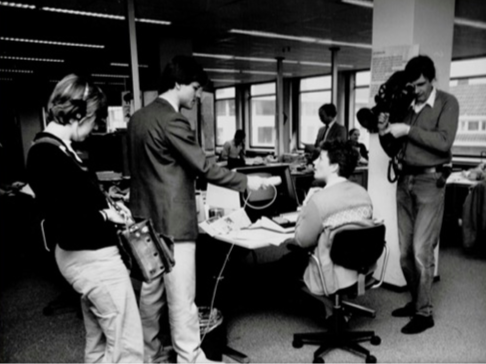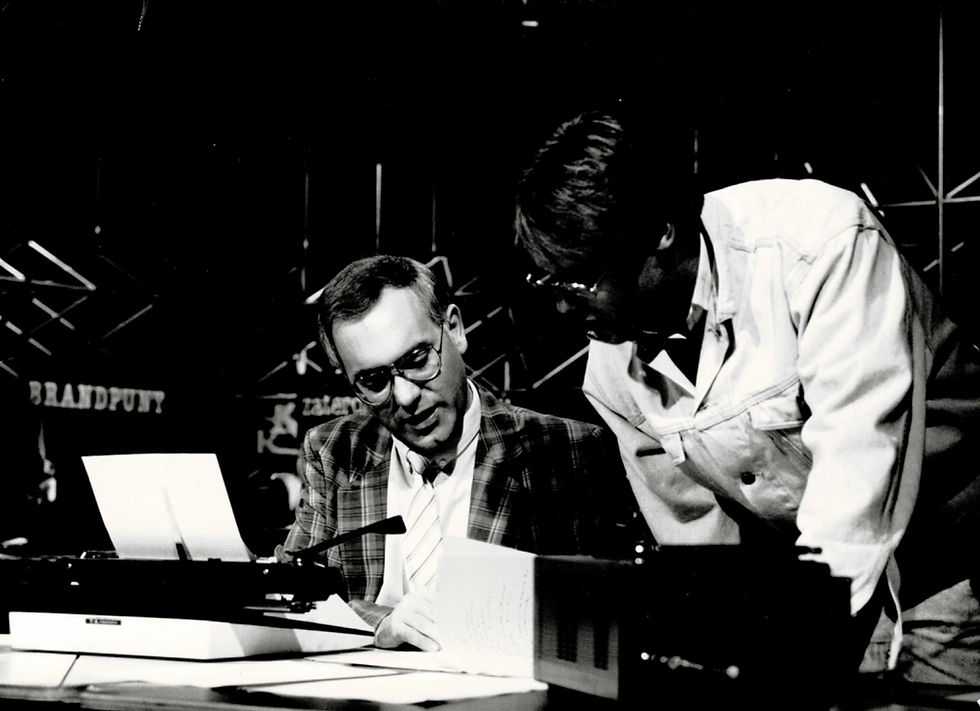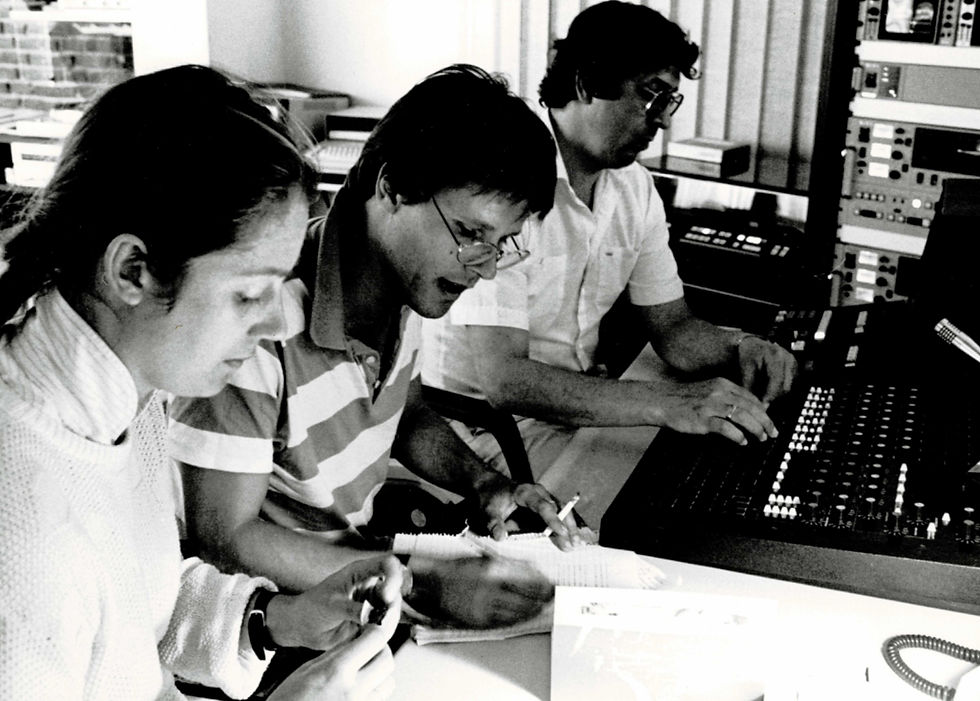
Good Evening!
BRANDPUNT – 1982–1996
In 1982, I was appointed as the youngest reporter for the renowned current affairs program Brandpunt. I stepped with reverence into the footsteps of journalistic pioneers like Aad van den Heuvel, Ed van Westerloo, Ad Langebent, and Frits van der Poel—figures who, since the 1960s, had ushered in a true breakthrough in television journalism with the program.
As an international correspondent, I traveled the world—focusing especially on the news regions of the Middle East, South America, and Africa. The experienced and unforgettable cameraman Lajos Kalanos was my most important companion. Brandpunt became my way of life. We saw it as almost a missionary task: to open a window to the world for viewers. It became a way of life—restlessly searching for new angles and surprising narratives to break through indifference toward what was happening elsewhere in the world.
Before long, I became one of the presenters of this oldest informative TV program. Years later, I would serve as editor-in-chief. Over time, I came to understand that television journalism is much more than documenting background to the news. The power of the story defines its impact. No matter how many news scoops or revelations I delivered, I always felt more like a storyteller than a news hunter.
Time and again, the suffering of the world gripped me by the throat. There are dozens of moments that will never leave my mind.
When, under Pinochet's regime in Chile, a 13-year-old girl named Nadja Fuentes was shot dead in a rebellious neighborhood of Santiago, we mourned with her family. Her parents, sisters, and brothers were inconsolable. It hit us hard as well. I saw Lajos crying behind his camera. I couldn't hold back my own tears either.
In the Vietnamese city of Danang, I met Vo Ti Lien, a young woman who had survived the American massacre in the village of My Lai as a child. We returned with her to the site of the mass killing. In the now peaceful village, she pointed in bottomless sorrow to the spot where she had escaped the bullets by hiding under her grandmother’s lifeless body. On the car ride back to Danang, she fell asleep sobbing on my shoulder.
In Zambia, we filmed how death in Africa had taken on a new name: AIDS—a phenomenon still virtually unknown in our own country at the time. In remote areas, we witnessed the desperation of traditional healers. Hospitals were overflowing with terminally ill men, women, and children. I met President Kenneth Kaunda, one of the few African leaders courageous enough to take the AIDS epidemic seriously. I was there when Bonyface, a sixteen-year-old boy, was told he would die. His expressionless face will stay with me forever.
Over the years with Brandpunt, I developed a growing need to frame news through personal narratives. That became my lasting motivation: to seek out the small story that is emblematic of a greater whole. Icon Aad van den Heuvel soon dubbed me “the young poet from Nijmegen.” Later, Ton Verlind would describe me as a “romantic” who gave tone and content a new resonance within contemporary journalism.
With narrative strength and respect for the facts, it was always my aim to engage and captivate millions of viewers—to generate empathy for injustice, suffering, and wrongdoing just a few hours' flight from our doorstep. As editor-in-chief, this was also the passion I sought to pass on to my journalistic colleagues on programs like Brandpunt, Reporter, and Netwerk.
Over the years, the prestigious Brandpunt also spawned numerous spin-offs—in many of which I would take part, in varying roles.





Watch an episode:
